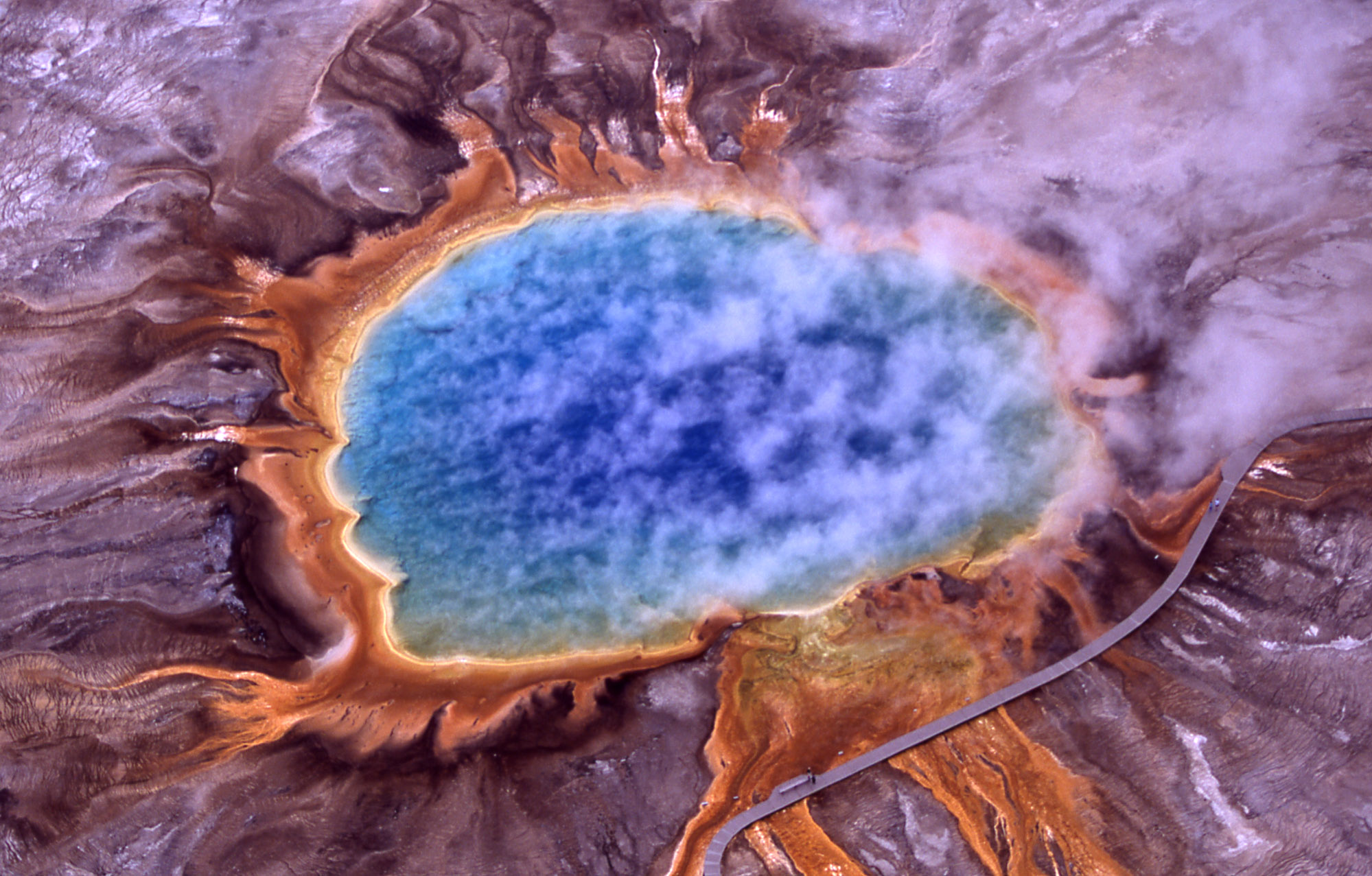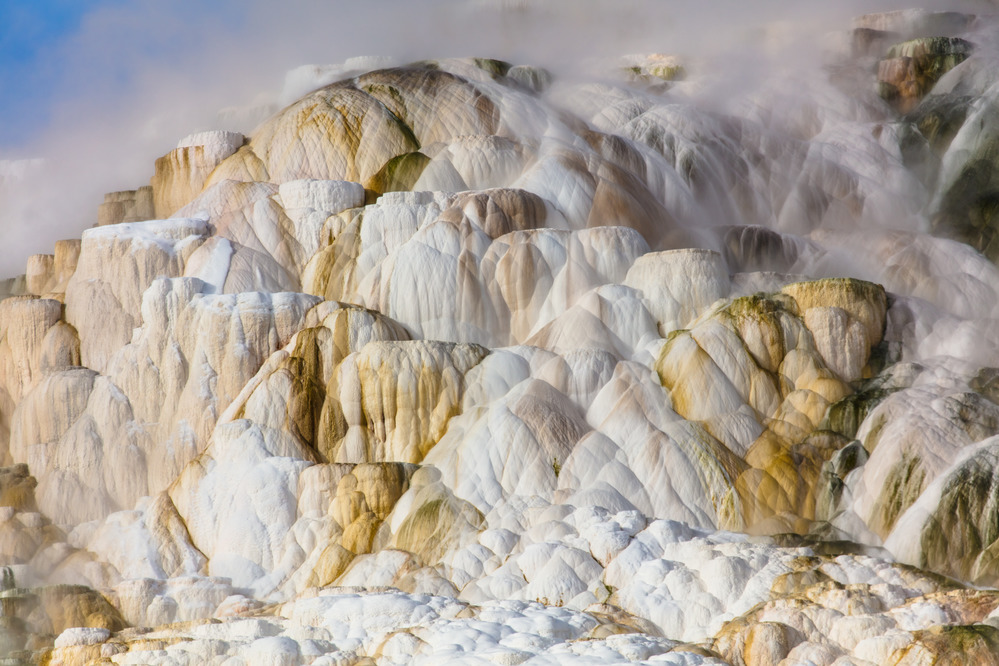Yellowstone National Park Tour, USA
Sentinel-1 CSAR IW acquired on 19 August 2021 and 13 December 2021
Sentinel-2 MSI acquired from 03 May 2016 to 21 June 2021
Landsat-5 TM acquired on 04 June, 22 July and 23 August 1988
Landsat-8 OLI-TIRS acquired on 11 March 2021 at 18:06:37 UTC
Sentinel-2 MSI acquired from 03 May 2016 to 21 June 2021
Landsat-5 TM acquired on 04 June, 22 July and 23 August 1988
Landsat-8 OLI-TIRS acquired on 11 March 2021 at 18:06:37 UTC
Keyword(s): Geology, Hydrology, Topography, Water colour, Wildfire, United States, USA
Yellowstone was the first national park in the U.S., established by the U.S. Congress on March 1, 1872. - Source: Wikipedia
"Yellowstone Lake is one of the largest high-elevation lakes in North America and is centered over the Yellowstone Caldera, the largest supervolcano on the continent. The caldera is considered a dormant volcano. It has erupted with tremendous force several times in the last two million years. Well over half of the world's geysers and hydrothermal features are in Yellowstone, fueled by this ongoing volcanism. Lava flows and rocks from volcanic eruptions cover most of the land area of Yellowstone. The park is the centerpiece of the Greater Yellowstone Ecosystem, the largest remaining nearly-intact ecosystem in the Earth's northern temperate zone. In 1978, Yellowstone was named a UNESCO World Heritage Site." - Source: Wikipedia.
"The Grand Prismatic Spring in Yellowstone National Park is the largest hot spring in the United States, and the third largest in the world, after Frying Pan Lake in New Zealand and Boiling Lake in Dominica. It is located in the Midway Geyser Basin.
Grand Prismatic Spring was noted by geologists working in the Hayden Geological Survey of 1871, and named by them for its striking coloration. Its colors match most of those seen in the rainbow dispersion of white light by an optical prism: red, orange, yellow, green, and blue." - Source: Wikipedia.


Aerial view of The Grand Prismatic Spring of Yellowstone National Park - Source: National Park Service.
"Mammoth Hot Springs is a large complex of hot springs on a hill of travertine in Yellowstone National Park adjacent to Fort Yellowstone and the Mammoth Hot Springs Historic District. It was created over thousands of years as hot water from the spring cooled and deposited calcium carbonate (over two tons flow into Mammoth each day in a solution). Because of the huge amount of geothermal vents, travertine flourishes. Although these springs lie outside the caldera boundary, their energy has been attributed to the same magmatic system that fuels other Yellowstone geothermal areas." - Source: Wikipedia.

Canary Spring Terraces, Mammoth Hot Springs - Source: National Park Service.
"Yellowstone Lake is the largest body of water in Yellowstone National Park. The lake is 7,732 feet (2,357 m) above sea level and covers 136 square miles (350 km2) with 110 miles (180 km) of shoreline. While the average depth of the lake is 139 ft (42 m), its greatest depth is at least 394 ft (120 m). Yellowstone Lake is the largest freshwater lake above 7,000 ft (2,100 m) in North America.
In winter, ice nearly 3 ft (0.91 m) thick covers much of the lake except where shallow water covers hot springs. The lake freezes over by early December and can remain frozen until late May or early June." - Source: Wikipedia.
"The geothermal areas of Yellowstone include several geyser basins in Yellowstone National Park as well as other geothermal features such as hot springs, mud pots, and fumaroles. The number of thermal features in Yellowstone is estimated at 10,000. A study that was completed in 2011 found that a total of 1,283 geysers have erupted in Yellowstone, 465 of which are active during an average year. These are distributed among nine geyser basins, with a few geysers found in smaller thermal areas throughout the Park. [...]
Although famous large geysers like Old Faithful are part of the total, most of Yellowstone's geysers are small, erupting to only a foot or two. The hydrothermal system that supplies the geysers with hot water sits within an ancient active caldera. Many of the thermal features in Yellowstone build up sinter, geyserite, or travertine deposits around and within them." - Source: Wikipedia.
"The Grand Canyon of the Yellowstone is the first large canyon on the Yellowstone River downstream from Yellowstone Falls in Yellowstone National Park in Wyoming. The canyon is approximately 24 miles (39 km) long, between 800 and 1,200 ft (240 and 370 m) deep and from .25 to .75 mi (0.40 to 1.21 km) wide." - Source: Wikipedia.
"The plateau developed through three volcanic cycles spanning two million years that included some of the world's largest known eruptions. The eruption of the >2,500 km2 (970 sq mi) Huckleberry Ridge Tuff about 2 million years ago created the more than 75 km (47 mi) long Island Park Caldera. The second cycle concluded with the eruption of the Mesa Falls Tuff around 1.3 million years ago, forming the 25 km (16 mi) wide Henry's Fork Caldera at the western end of the first caldera. Activity subsequently shifted to the present Yellowstone Plateau and culminated 630,000 years ago with the eruption of the >1,000 km2 (390 sq mi) Lava Creek Tuff and the formation of the present 45 km × 75 km (28 mi × 47 mi) caldera. Resurgent doming then occurred at both the NE and SW sides of the caldera and voluminous 1,000 km2 (390 sq mi) intracaldera rhyolitic lava flows were erupted between 150,000 and 70,000 years ago. Phreatic eruptions produced local tephras during the early Holocene. The caldera presently contains one of the world's largest hydrothermal systems including the world's largest concentration of geysers. Much of the plateau is located within Yellowstone National Park." - Source: Wikipedia.
"The Yellowstone fires of 1988 collectively formed the largest wildfire in the recorded history of Yellowstone National Park in the United States. Starting as many smaller individual fires, the flames quickly spread out of control due to drought conditions and increasing winds, combining into one large conflagration which burned for several months. The fires almost destroyed two major visitor destinations and, on September 8, 1988, the entire park closed to all non-emergency personnel for the first time in its history. Only the arrival of cool and moist weather in the late autumn brought the fires to an end. A total of 793,880 acres (3,213 km2), or 36 percent of the park, was affected by the wildfires." - Source: Wikipedia.











